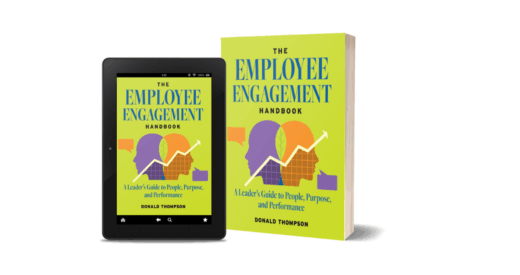</br>
Especially in today’s talent market, it’s tempting to fill an open position quickly with a qualified candidate who is conveniently available, but a more deliberate and intentional end-to-end hiring process can result in long-term benefits, rather than just filling an immediate need. This is especially true if your company’s goal is to create a more diverse, equitable, and inclusive workplace culture.
Attracting a diverse pool of job applicants is a great first step, and writing inclusive job descriptions and ensuring a fair recruitment process can help. But how can hiring managers prevent qualified candidates from being eliminated early on due to hidden or unconscious bias?
An inclusive resume review process negates the effects of hidden prejudices and allows the best candidates to stand out, regardless of their gender, race, education history, ethnicity, national origin, and more. The next time you have an open position, consider these four tips for creating a more inclusive screening process.
1. Understand unconscious bias, and resolve to address it.
Everyone on your team who is in a position to influence or be involved in the hiring process should know how hidden bias can affect their decisions and your hiring outcomes. Even those who champion diversity, equity, and inclusion as a workplace priority can benefit from unconscious bias training in order to highlight potential pitfalls and learn to mitigate their own innate tendencies. Being aware of bias is only the first step; concrete measures to combat prejudice are also essential.
One great example comes from Airbnb. The company has been aware of racism on its platform since a 2014 study revealed discrimination by hosts, and they have responded with a number of measures, including anti-bias training and policy changes. This month, as part of its ongoing goals to fight bias and improve inclusion, Airbnb will launch a trial program that will obscure the name and photo of potential guests until the booking is confirmed.
2. Conduct masked resume reviews.
Hiding personal identifiers is one of the most widely-used methods for conducting inclusive applicant screening. In a masked resume review, all non-essential demographic data – like the person’s name, address, and school – are stripped from the resume, allowing reviewers to focus on experience and qualifications.
Astronomers at the Space Telescope Science Institute used this method to combat gender bias in their review and acceptance of research proposals to use the Hubble and James Webb space telescopes. Before their masked review practice began in 2018, proposals for Hubble time that were submitted by women had a much lower acceptance rate. That year, proposals from women outpaced those submitted by men for the first time.
There are many software programs available to hide an applicant’s demographic information, but there are also numerous low-tech alternatives. For instance, you may ask applicants to leave out identifying data from their resumes, or edit printed resumes with a black Sharpie marker before starting the review process.
3. Use skills assessments to judge qualifications.
Pre-hire assessments are another common way to measure a candidate’s skills and qualifications more objectively. Often, these tests are part of the screening process, aiming to measure not just job-related skills but also personality traits, motivational drivers, and value alignment.
As an example, the British charity Comic Relief uses Applied software to ask specific role-related questions in the application process. “This lets us focus on the candidate’s skills, rather than trying to connect the dots between a cover letter and a [resume] and risking our own unconscious bias contributing to decision-making,” says Charlotte Cole, Comic Relief’s recruitment manager.
Ditching the resume entirely and relying on skills tests or project-based assessments can help to level the playing field, but it’s important to note that poorly-designed tests can also draw out an already lengthy hiring process. Qualified candidates might also balk at completing a project aimed at judging their skills if it smacks of unpaid work, so it’s crucial that you communicate early in the process that you’re assigning these tasks as a way to mitigate resume-based biases in the hiring process.
4. Recruit a diverse hiring team
Skills assessments and blind resume reviews are helpful tools for initial candidate screening, but they don’t address what happens when candidates show up for in-person or video interviews. That’s when it’s important to have the right people on your interview teams. In brief, a diverse interview team can achieve better hiring results by mitigating each other’s unconscious biases. If your current employee population is still mostly homogenous, you may need to call on external partners to make your interview team more diverse.
A great example comes from Paul Cash, general counsel of Wyndham Destination Network, who set a team goal to hire more diverse lawyers. To make that happen, Cash first enlisted a diverse hiring team. “We thought if we have a diverse group of interviewers, that we’ll look at the candidates all differently, we’ll get the best picture and that will produce the best balanced slate of candidates,” he says. The team then screened every resume that was submitted, taking care to focus on qualifications, not which law school the applicant attended.
This collaborative approach removes the hiring decision from a single hiring manager and improves the decision-making process through diversity of thought. One person’s biases can be caught and balanced, plus members of the team can hold each other accountable to follow the process as it is intended.
While there are certainly some drawbacks to each of these techniques when used alone, often, a mix of all four methods will yield great results that align with your company’s diversity, equity, and inclusion goals. It might be helpful to think of your organization’s inclusive hiring process as a journey with frequent pit stops to reflect, reevaluate, and edit as necessary.
As Katherine McNamee, Director of Human Resources at The American Alliance of Museums, so nicely phrases it, “like all organizations who hope to create a more equitable workplace, we must continue to question all aspects of our processes, procedures, norms, and values — including with staffing decisions.”
To learn more about creating an equitable and inclusive hiring process, join The Diversity Movement this Thursday, January 27, at 12:00 ET for a free, live webinar discussing “How to Lead an Inclusive Interview Process.”
Amber Keister is a writer and editor who believes in the power of story to bring people together. Her work has appeared in Cary Magazine, The News & Observer, and other local publications.






